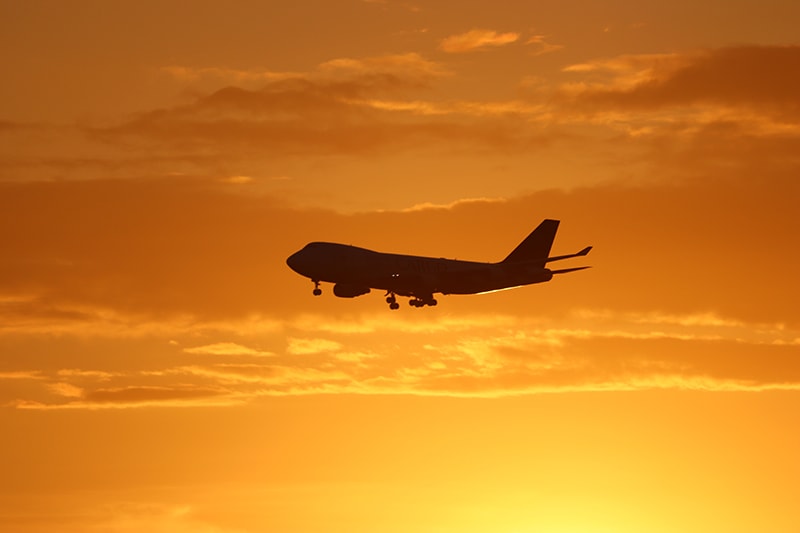 The AppleTV+ miniseries “Hijack” put a spotlight on an aviation security threat that was once the biggest fear of air travelers. But the good news is that hijackings have greatly diminished in recent decades.
The AppleTV+ miniseries “Hijack” put a spotlight on an aviation security threat that was once the biggest fear of air travelers. But the good news is that hijackings have greatly diminished in recent decades.
In the series starring Idris Elba, a flight from Dubai to London is hijacked by a group of terrorists using guns concealed in toiletry bags in their luggage. The seventh and final episode of the miniseries aired this week.
The Sept. 11 hijacking of three U.S. airlines, which ultimately led to the deaths of nearly 3,000 people, was the worst such incident in aviation history. But hijackings have been a problem almost since the beginning of air travel. Such incidents became almost commonplace in the late 1960s and 1970s: there were 86 hijacking incidents in 1969 alone, for example, and 78 in 1970. Between 1971 and 2002, there were at least 10 hijackings a year, with dozens reported in many of those years, according to the Aviation Safety Network.
Since then, however, hijackings have become increasingly rare. Since 2009, there have been five or fewer incidents per year, and none at all in 2015, 2017, 2020, 2022, and—so far—2023.
Addressing the House Committee on Homeland Security around the 20th anniversary of the Sept. 11 attacks, Transportation Security Administration head David P. Pekoske outlined the vast array of airport security measures that have been implemented in the past two decades to prevent hijackings, bombings and other terrorist attacks against airlines and air travelers.
Recommend asked Jeffrey C. Price, owner of Leading Edge Strategies and Professor at MSU Denver, Aviation & Aerospace, about this security threat, and he says, “I think the main reason we don’t see hijackings as much is the threat has now changed. Prior to 9/11 there was a general assumption that hijacked aircraft were not going to be used to crash the plane into a building. Now, there is going to be much more active resistance by both passengers and flight crew. Plus, we have implemented a lot of security measures, and I’m not just talking about improved screening, we didn’t have up until after 9/11. That said, I never dismiss the possibility that one could occur, and in my aviation security training classes, I always re-emphasize that point so that we do not get complacent.”
Hijackings are Deterred by Robust Security Procedures
“TSA has implemented a robust series of security procedures, developed a workforce well-trained in threat mitigation, and sought and implemented state-of-the-art technologies to screen passengers, baggage, and air cargo,” he said.
Far from the days of passing through a simple metal detector—technology added after the first wave of hijacking incidents—today’s travelers are screened for weapons and other prohibited items using CT scans and millimeter wave technology, while passenger identity is confirmed via document scanners that check ID against security databases and biometric technology, he said.
Pekoske stressed, however, that threats to air travelers remain and are still evolving.
“In the 2000s, we witnessed hijackers using planes as weapons, and we saw unique methods in attempts to conceal explosives in items like shoes, underwear and soft drinks,” said Pekoske.” In the 2010s, we witnessed explosives hidden in electronics and attacks on the public side of the airport. Now, in the 2020s, we face new and extremely sophisticated threats from state and non-state actors, ranging from cyberattacks to concerns about hostile and non-hostile unmanned aircraft systems, in addition to traditional threats.”
So, tell clients who have watched the popular series, including that nail-biting season finale, and fear that it could happen to them that today those incidents are more fiction than fact.
This article previously ran at recommend.com
You May Also Be Interested In…
House Passes Bipartisan Bill Protecting Travelers’ Rights
Prevue’s Top 10 Packing Tips of All Time
10 Worst U.S. Airports for Flight Cancellations and Delays



![[UPDATE] Qatar Reopens Airspace After Iran Target on U.S. Military Base](https://www.prevuemeetings.com/wp-content/uploads/2025/06/close-up-detail-view-of-highloader-cargo-catering-2025-01-10-12-57-42-utc-1-218x150.jpg)






